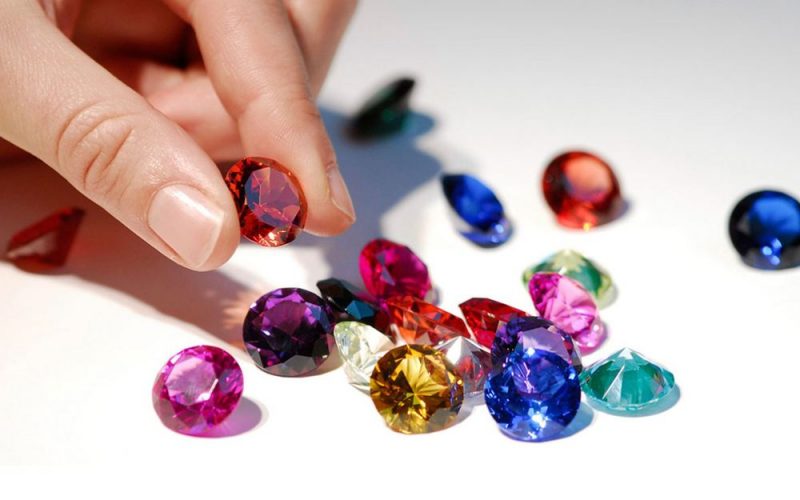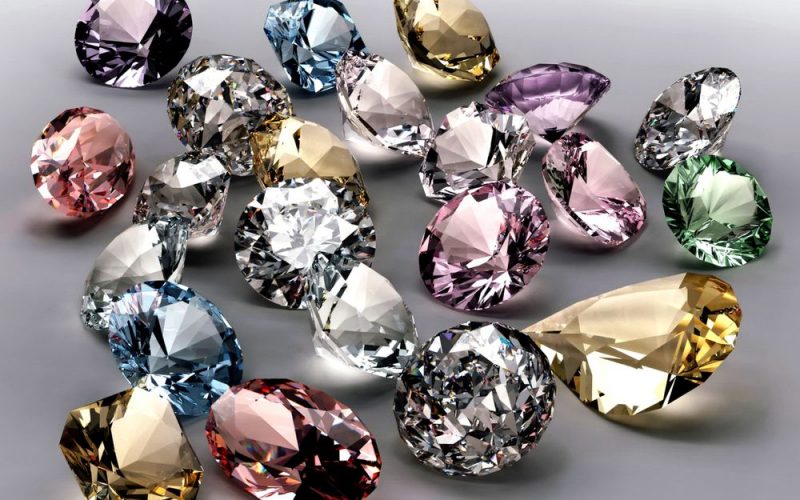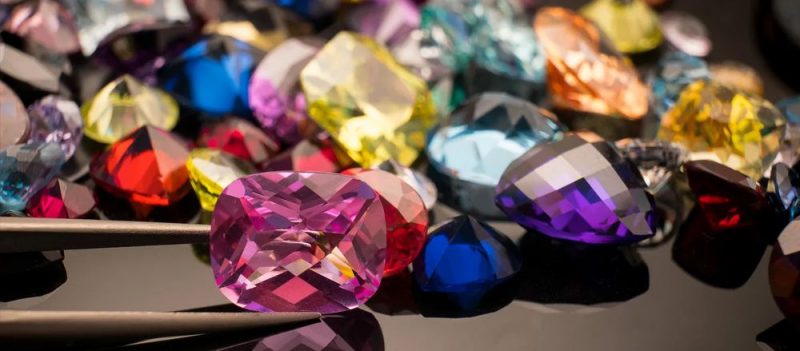‘Lab-created’ is one of the hottest and most controversial buzzwords in the jewelry world lately with many insiders fervently for or against these stones.
On the one side you have the likes of diamond giant De Beers, who rocked the industry in 2018 when they launched Lightbox, their lab-created diamond arm. Recently too, the world’s largest jewelry brand, Pandora, created a stir when they announced that in the future they would only be using lab-created stones. On the opposing side you have companies like van Cleef and Arpels, who have declared that these stones are something they will never consider.
So where does this leave us gemstone lovers? Are lab-created gemstones the way of the future? Are they better? And are they even real?
The Definition – Getting to the bottom of Natural, Simulated and Synthetic Stones
A natural gemstone refers to any stone that has been formed over time by nature. This stone may be subject to various treatments, such as heating or oiling, to enhance it, but these treatments, according to US law, must be disclosed by the seller.
Simulated stones have been around for as long as people have been unable to get their hands on the gems they desire. Put simply, a simulant is anything that is pretending to be a certain gemstone but that has a different composition to it. The Ancient Egyptians used porcelain and colored glass stones to masquerade as their most precious gems. Simulants are not just fake gemstones however – it was common in the middle ages to pass off cheaper and more readily available garnets as rubies. More recently lab-created moissanite and natural white sapphires have both been used as diamond simulants.
A gemstone is referred to as synthetic when it has been created in a lab. Crucially, though, a synthetic gemstone has the exact same chemical properties as its natural counterpart. It is now possible to recreate the finest emerald, from its intense blue-green down its ‘jardin’ (or inclusions), in a lab.
You might be surprised to learn that synthetic gemstones have been around since the late 19th century – with the ruby being the first gem to be successfully synthesized by French chemist Verneuil using the flame fusion process. Various methods have been developed over the years with synthetic gems being used by industry and jewelers. Lately, synthetic stones have had a bit of a rebrand (synthetic having connotations of fakeness) which is why all the talk today is about lab-created gemstones instead of synthetics.
The Price
One of the biggest factors in favor of lab-created gemstones is their price – they are significantly cheaper than their natural counterparts. A one carat ruby lab-created ruby could be half the price of a natural one. What many people don’t consider when comparing cost though, is the resale price of lab-created stones. The value of a natural gemstone comes down to rarity and demand. Take tanzanite for instance: this highly desirable stone is only found in one location in east Africa. When the mines run out of tanzanite, that’s it! Lab-created gemstones are the very opposite of a finite resource as more can always be made. Currently lab-created gemstones have little or no resale value.
The Difference
So, if lab-created gemstones are chemically the same as their natural counterparts and significantly cheaper then why would anyone still want to buy a natural stone? The answer to that has a lot to do with rarity and the lure of the original. Take a natural, untreated Kashmir sapphire for instance. Widely regarded as one of the finest gemstones in the world, these velvety cornflower blue stones were only mined from 1882 to 1887 from a small deposit in the remote Zanskar mountains in the Kashmiri Himalayas.
It was only at this one location on the globe that millions of years of geological forces and specific chemical reactions combined to create a stone that over a hundred years after its discovery still has no equal. And it is only stones that have were mined from this location that were guarded by the Maharajah of Kashmir’s troops, before beginning a perilous journey down the mountain to be lusted after by Kings, Empresses and movie stars around the world.
Whilst a lab could theoretically replicate the color of a Kashmir sapphire, it would be unable to recreate its life cycle or its journey – much the same way that a copy of van Gogh’s Sunflowers, no matter how good, could never quite take the place of the original.
The Ethics
Much of the talk around lab-created gemstones focuses on ethical considerations. A growing awareness of bad mining practices and the damage these can cause to the environment and workers has led many to see synthetic gemstones as a solution to these problems. However lab-created gemstones have their own problems too. The finest examples are created from a small gem ‘seed’ that is then built up either from circulating gases or in a high-pressure, high-heat chamber. These methods can require large amounts of energy, meaning lab-created gemstones are not quite as green as they might appear at first.
More importantly, many people ignore the positive effects that mining can have on communities. Take Sri Lanka, home to some of the world’s finest sapphires, as an example. Most of the mining on this Indian Ocean island is small scale and uses traditional methods, meaning that there is less harm to the environment. The industry is closely monitored by local bodies who ensure that high environmental and ethical standards are kept. Mine inspectors ensure that there is a strict enforcement of the no child labor policy and that pit mines are always closed. There is also an insurance scheme to compensate the rare instances of mining-related injuries.
Sri Lanka’s mines employ an estimated 60 000 to 70 000 people and the earnings from the industry provides an invaluable source of revenue, both for the miners, but also for a struggling developing nation. The loss of these jobs would cause incalculable damage to the many communities who rely on mining for their sole source of income.
The Final Word
So where does this leave gem lovers? And what are we to think of industry moves into the lab-created gemstone market. It might help to consider the status of the companies mentioned at the beginning of this article. Pandora is very much a fashion brand, whilst van Cleef and Arpels is proud of its heritage as a leading luxury brand. Speaking recently the chief executive of De Beers echoed this distinction when he declared that lab-created gems are ‘fashion not luxury… technology… you can wear on the [subway]’.
At JupiterGem we believe that gemstones are special and that jewelry should be more than technology. We think that the unique qualities of natural gemstones should be celebrated and that nothing man-made can truly compare to the spectacular beauty of nature’s creations. We believe that our one-of-a-kind customers deserve one-of-a-kind gems, so get in touch with us today and let us help you find your perfect stone.




